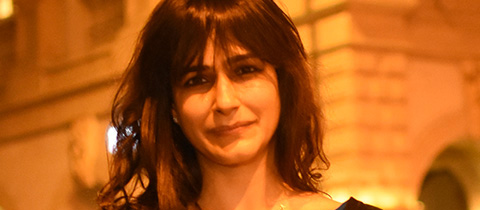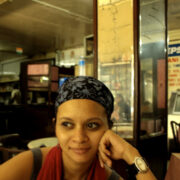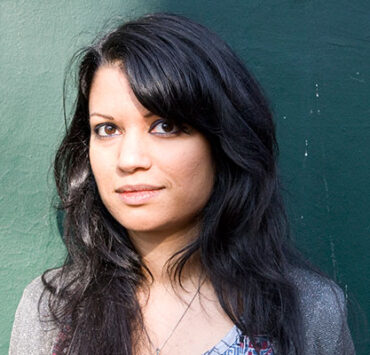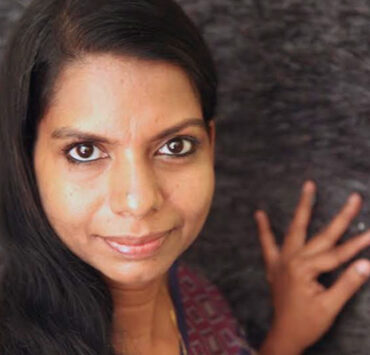An Irani and a Parsi walk into a bar… Sounds like the setup for a hilarious joke, right? And yet the mood is far from light when Dr. Simin Patel first meets me on a rooftop bar overlooking the Radio Club in Colaba.
Later, as we walk down the seafront promenade, I discover the reason for her worry. The first signs of impending doom have sprung up around an Edwardian-era structure; the ubiquitous corrugated steel sidings signify that some fresh outrage to the building is imminent.
This is certainly not the first example of the way heritage structures in the city are callously disregarded by the Brihanmumbai Municipal Corporation (B.M.C.), who have time and again slashed conservation budgets and curtailed the powers of the Mumbai Heritage Conservation Committee (M.H.C.C.), until all that remains is to watch helplessly as building after building either succumbs to neglect, or is transmogrified into a monolithic tower.
It is for this reason that the Bombaywalla blog has, in addition to its original purpose as a way to contextualise Bombay’s historical structures, become a multi-functioning platform—serving as the canary in the coal mine for those structures that seem on the verge of disappearing, a grim elegy for those that already have, and a celebration of those structures that still continue to stand.
If one were to go by Aristotle’s claim in the Poetics that “the poet and the historian differ not by writing in verse or in prose”, then every single one of Bombaywalla‘s posts can be called epigrammatic. Deliberately using an old-fashioned persona called ‘Miss Bombaywalla’ to explore the byways of the city, Dr. Patel slips easily into character. The witty turns of phrase are what make the blog an effortless read, perhaps because she is the daughter of Jehangir Patel, the editor of Parsiana, a semi-monthly English magazine, which covers matters of interest to the Zoroastrian community. Her stellar writing is supported by Hersh Acharya and Hashim Badani’s equally engaging photography skills.
She is, in fact, currently working on a coffee table book with Hashim for Roli Books that traces the history of the popular Irani cafés of the city. Her DPhil dissertation at the University of Oxford was similarly focused on the Parsis of Bombay from 1860 to 1921. Together with the rest of the Bombaywalla team—Sitanshu Shukla (design), Shaun Coutinho (web), and D. J. Murty (photographs and research)—she managed to keep the blog going while she travelled from Bombay to Balliol and back again.
We recently spoke to Dr. Patel about Bombaywalla, her upcoming book about Irani cafés in the city, and a little about the history of Bombay. Read on for excerpts—
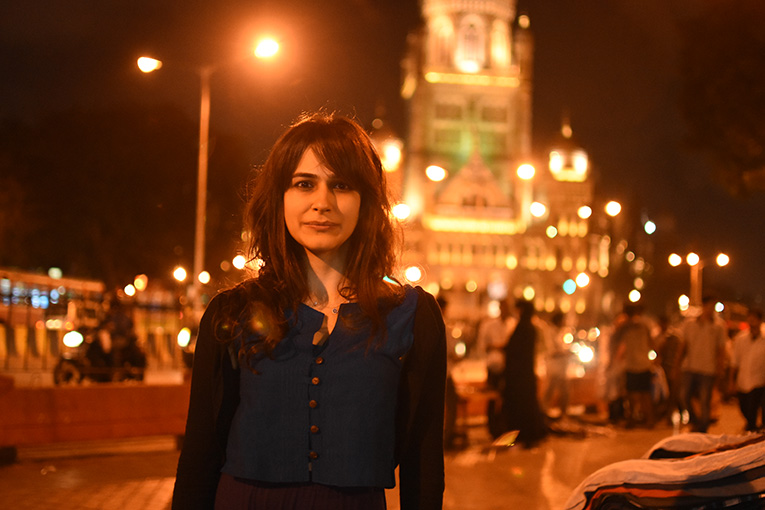
Dr Simin Patel. Photograph by Aamir Rangwalla.
This March saw the third anniversary of the Bombaywalla blog. How did it all start?
I wanted to do something with the information I had on Bombay. I was working with my friend, Sitanshu Shukla, from St. Xavier’s, on a grant application: ‘Mapping Bombay, 1862’. When that didn’t go through, we didn’t want to let it go. Our work took the form of a blog with the help of two other friends from St. Xavier’s, Shaun Coutinho and D. J. Murty. So you could say that it was a failed grant, some perseverance, some new ideas, and a lot of time, hard work, and no pay (laughs). That’s how it sort of started. There was a team effort behind Bombaywalla’s launch on Nowruz.
The Nowruz launch was actually suggested by your father, wasn’t it?
The blog was ready to go just around Nowruz. I think he’d said to me, ‘Of course, you must wait to launch it on the 21st!’ It’s been a great marker and easy to remember. The nice thing about it is that people who follow the blog are able to remember the birthday. I always get some messages and emails around that time saying, ‘Hello! The birthday is approaching!’
What is it about Bombay’s heritage buildings that inspires you to continue doing this?
The format of the blog has, through time, turned out to be a photo of a detail of a heritage structure, or an interesting Bombay building. Through that, you get the history of Bombay. I’m not always talking about architectural detail or the history of the building; the way it was built, architects, engineers, materials, etc., because I am not trained in these areas. The photo becomes a sort of springboard through which you can then speak about the history. And that history has come through my dissertation. I suppose the interest in structures has come through my parents and through being surrounded by these structures, all the places that I went to—school, college, my parent’s office, my home. The proximity to these structures made me invested in them, and then through them, to get into the history of the city.
It’s a way to reach into the past, a window that has suddenly been flung open.
Yes, the subhead on the blog is ‘Knowing City Structures’ but we were thinking of changing it to better reflect knowing city history through city structures.
How do you build a Bombaywalla post?
Sometimes it’s the photo that makes you write the story; sometimes you have the story and you look for a photo. It’s very rare that you have the story and the photo at the same time. It works both ways, sometimes the photo leads and sometimes the story leads. Hashim Badani and Hersh Acharya wrote in after the blog started, and we began using their photos because they are professionals. There are also guest posts and guest city series.
You’ve trained as a historian. I know your parents have encouraged you, but isn’t that an unusual career choice? What advice do you have for those interested in pursuing this, but confused as to the real-world applications in this field of study?
My father had heard about Jawaharlal Nehru University (J.N.U) and encouraged me to apply there after St. Xavier’s. I had to work hard for that entrance exam; I didn’t do Malhar (the St. Xavier’s College annual festival) in my last year, even though I had done it for four years. When I got into J.N.U., I was an English Literature student for my undergrad and M.A., and then I shifted to history.
In terms of a career, I’d say Bombay isn’t a great place if you want to teach history. I think the real academic environment and challenges are in Delhi and other parts of India. It’s a very competitive field. Even academia abroad is extremely competitive. I think you can be in Delhi and be a good historian and be happy with your work, but in Bombay, you have to innovate. If I stay here I would build on the blog, I would diversify, do history tours of the city and do different things like that, but I don’t think I would become a historian who taught. I don’t think I would become an academic. It is not as challenging. I don’t think that environment has been created, or if it has, then it has also been destroyed in many ways.
At the end of the day, Bombay is a city of entrepreneurs. It’s probably the best city if you want to do something innovative, so in that way, it’s a boon. You can be an independent historian, author, writer, reviewer, blogger, but not an academic, no. Not in Bombay.
Do you think it’s because in Bombay, we are looking to consciously erase bits of the past, and it’s so hard to talk about history when the history no longer exists, when you are erasing names…
Yeah, that’s sort of happening everywhere. In Bombay, it started early, from the 1950s and ’60s, but it’s happening in Delhi and elsewhere too.
You also work with the retro London café chain Dishoom.
Yeah, that’s kind of my real job right now. I’ve been consulting with Dishoom, a Bombay café in London for about two-and-a-half years now. Dishoom has four branches with many more opening. As a historical consultant, where each restaurant has a different theme, I work on developing and expanding that theme with them. That theme is usually from some decade of Bombay history that they want to recreate. I tell them where in Bombay to look at places, almost like a location scout. Getting permission is sometimes a challenge; there are some really difficult old Parsi gentlemen that I must keep visiting and try to get them to eventually come around.
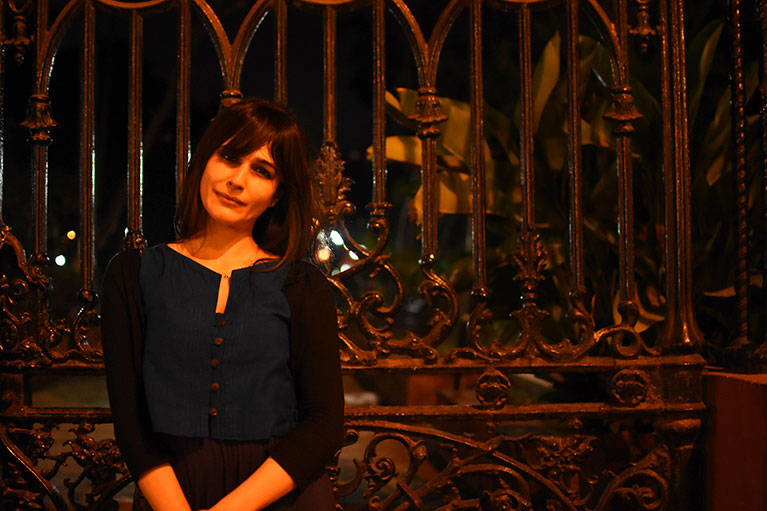
Bombaywalla turned three years old in March this year. Photograph by Aamir Rangwalla.
Do you see yourself continuing to live in Bombay in the future?
If I pursue an academic career, I’d be in Bombay for half the year at least. If I don’t, then I’d probably be here more, so things are a little uncertain for me at the moment. Once the book is out in early 2017, I’ll probably have a better idea. They are all patiently waiting for me to hurry up with it. I’m interviewing some of these chaps three to four times, and there are approximately 40-50 of them.
You point out things on the blog that most people from our community (with you being Parsi and me being Irani) would prefer to forget; these subterranean currents that flow beneath the community. The differences in Parsi vs. Irani food also make a point about socioeconomic class in a subtle way. Many people prefer to project the Zoroastrian community being a certain way. How do you come to these observational realisations that a lot of people don’t like to talk about?
That narrative never interested me. It’s such a stale narrative. The tougher questions are the most interesting questions. That’s what I’m finding out with the Irani café book as well. Now it’s all nostalgia, you think of these guys as sort of sweet old men and all that, but basically these are tough, rough guys, who talked nonstop about bikes, sex, and chicks. I’m drawn to these challenging areas. Everyone says things about each other; it’s just that it doesn’t reach the platforms of dissemination. In the consciousness of people in our community, however, these prejudices are free flowing.
Simin’s Favourite Places in Bombay
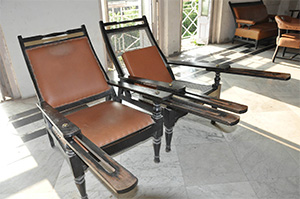
Ripon Club
Fort
Cafe De La Paix
Girgaum
‘An Irani cafe untouched by time.’
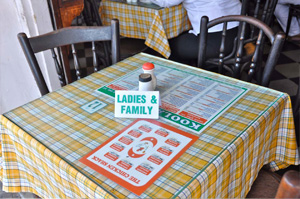
Koolar & Co.
Matunga
‘For the owner Amir Koolar’s wonderful company.’
Bombay Gymkhana
Fort
‘The best-preserved club in Bombay.’

Dhun Lodge
Tardeo Road
‘… which was cruelly flattened and then demolished over a year ago.’
Even with the general perception of Parsi women being progressive, you bring up the question of menses and how women in menses were treated, which is still a topic of discussion in India today.
I have to thank my supervisor, Prof. Rosalind O’Hanlon, for that. She went through the early draft of the dissertation and said, ‘Where are the women? Where are the women in your work?’, and so we based the second chapter on women in the Parsi domestic sphere. What kind of triggered all this was Dosebai Cowasjee Jessawalla who penned her experiences in her autobiography The Story of My Life—she was Adil Jussawalla’s great-great-aunt. It is a remarkably frank and bold autobiography of this elite Parsi lady. She is very open about going into confinement, all the pregnancies she’s had and all the children she’s lost; seven pregnancies in the first 10 years of her marriage, and only three or four children survived. So I was struck with that. This autobiography and my supervisor got me thinking about gender in the historical sense.
You also mention contemporary events on the blog fairly frequently. The World Zoroastrian Congress speech, for example, mentioning Dadabhai Naoroji’s complexion.
That’s all the little gossip that you have to keep your eyes and ears open for. I have everyone around me to thank for that! (Laughs) This is what the takeaway was on one day of the World Zoroastrian Congress, so I said, oh my god, this is awesome, and wrote about it on the blog.
I think it helps bridge the gap between the past and present so you don’t feel as if it is solely this dry history blog.
That’s why we try to stay away from using old pictures of Bombay. Unless the building has come down, we aren’t taking those 1920s or 1890s photos and saying something. It is always a recent photo of something that exists, and then we talk about something else through it.
Speaking of things coming down, let’s move onto our favourite topic: buildings coming down throughout Bombay, as you’ve mentioned with Dhun Lodge on the blog. Why are we so callous towards our architectural heritage?
I’m not sure why. Obviously there is this craze for development, the promise of money and ownership of flats that drives people to do this, but I don’t think the quality of life is necessarily better in these newer structures. Frankly, I don’t think all this should even be up for debate; there should be strict laws that protect all these structures. Sadly, the heritage committee has been weakened over the years. The worst thing that has happened is that a lot of Grade III structures have been removed from the list. Those are the ones that are up for demolition. It is one thing to create awareness and try to change mindsets, but there also has to be strong legal action and that has to extend to not just demolition but also to the flattening of the structures. Look at what’s happening on Marine Drive and the structures that are still there; basically, they are being flattened. If you see at Dhun Lodge before it was destroyed, it was an extreme example of flattening. When the balconies are being cemented over, the grilles are being replaced… all those surface embellishments, all the motifs, all the type, all of that is being destroyed. And the building might stand after that or it might be demolished, but that first stage is the crucial stage.
Bombay has always been a contested space.
Yes, but the rate of destruction is now so high, and it’s increased over the last decade or so. Prominent corner structures are going, like the Art Deco bungalow on Carmichael Road, which has already been destroyed.
In terms of the cosmopolitan mix of Bombay, how have things changed? You’ve talked about Irani cafés where, everyone, regardless of caste, mixed freely. Do you think there is now a homogenisation of culture?
I think that cosmopolitan nature [of Bombay] was already fading by the ’60s and ’70s. I do get a sense of loss, though, from the Irani café owners that I am interviewing. Many of them in the Byculla area mention how Catholics are no longer seen. I don’t think we are talking about loss as much as our parents and grandparents are talking about it. I don’t know if I am the best person to talk about it.
There are a number of colourful characters from history who feature on your blog, one of which is Arthur Travers Crawford.
Gosh, he got into a big soup! There are many, many chaps like this, some that were just totally corrupt, but others who simply fell out of favour with their communities.
Coming to the modern era, you’ve mentioned Kobad Ghandy on the blog before. Did you come across that or was that through Parsiana?
Actually, Parsiana has been following the story; he’s now been shifted from Tihar jail to a jail in Andhra Pradesh, it seems. Kobad writes to Parsiana and they publish his letters, and I’m just feeding off that. It’s a shame that the community is not rallying for him; he needs any kind of support he can get. It’s not only for the Parsis to make a noise, it’s for civil society to react, but it would also be nice if the community got up and did something.
It’s just a dialogue that needs to be had.
Yes, exactly. No prospect of bail. With other cases, for various reasons, they are out on bail and they have a lot of support. Kobad’s case doesn’t have that kind of backing.
You’ve written about Voodoo Club from the current era. Will you also be focusing on modern cultural landmarks on the blog?
I’d like to move to different decades and also do more interesting stuff; Vikram Doctor had mentioned some other structures associated with Bombay’s L.G.B.T. community.
I’m looking forward to seeing that list; sounds quite interesting. The Gay Bombay.
Yeah, I need to get more on gay Bombay, definitely.
Even though the focus of the blog extends only till the ’20s, you do go into the Pre-Independence period in Bombay as well. Do you think you will be talking more about that in the future?
Definitely, there should be a more elastic timeline as well as a geographical expansion to the north. Both are very much on the agenda. Actually, I’d like to do more research on Art Deco in Bombay; the ’30s and the ’40s had very interesting things happening. For example, the suburb of Matunga came up in the ’20s and ’30s; it was basically a suburb that’s Art Deco in many ways. So you have Marine Drive with the four-story Art Deco structures, and Oval Maidan; and then you have Dadar and Matunga with these very sweet two-story Art Deco structures. You just have to take a taxi and go there, to realise that you suddenly have whole suburbs of Art Deco. The ’30s and ’40s are the Art Deco era and what I’d like to do with my academic research, later on, is make the argument that Art Deco was our national architecture. You keep thinking everything post-Independence in India is national architecture, what was built in the ’50s and ’60s by the Nehruvian state. But what I’m trying to say is that in many ways, these structures are the way that Bombay asserted its national identity.
Like when you look at the figures on the New India Assurance Building…
Exactly, look at them and compare them with the Crawford Market ones of Kipling, which are not strong. P. M. Road in Fort is where all these insurance companies were, the Lakshmi Building and others. That one stretch tells you the power of Art Deco.
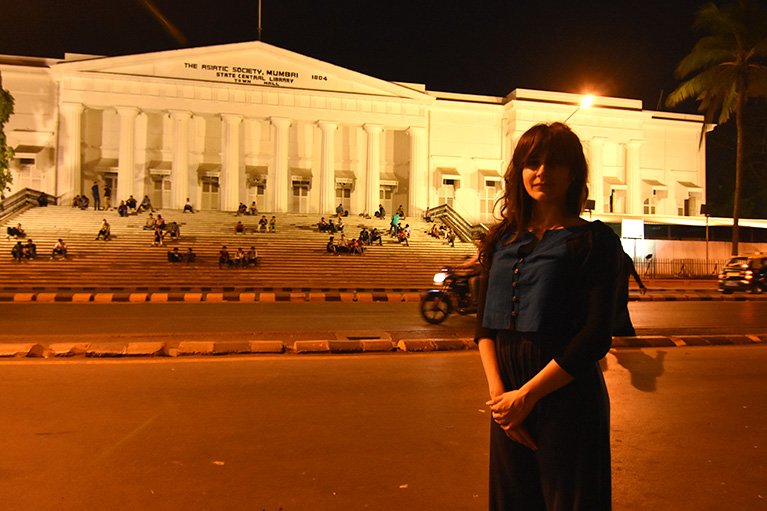
“In many ways, these structures are the way that Bombay asserted its national identity.” Photograph by Aamir Rangwalla.
It is very interesting. Most people don’t talk about the identity-building that took place through newer forms of architecture.
The interesting thing about these is that they are all the first Indian architects to come out of the J. J. School of Art, who then formed their own firms. So the first Indian firms we had in Bombay chose Art Deco in the 1920s as the style they are going to build in. And something like Liberty Cinema was built in 1949, the year of Independence. It was the last big Art Deco structure in Bombay because 1949-1950 is when you can say Art Deco was done with. And Liberty Cinema was where they had decided to show only Indian cinema.
After your book on Irani cafés, are you planning to focus on Bombay’s cinema halls? I loved your post about Edward Cinema and there are so many old cinema halls in Bombay, some of which have already come down and others that have become dilapidated.
Definitely, I’d like to cover them. Some of them in Grant Road are so shady, that you can’t even enter the hall (laughs). I’d like to cover the structures on the blog and then some of them through the Art Deco aspect, but those are obviously the much grander ones. Capitol is another one.
There are some cinemas that have been completely renovated and in the process lost some of their fixtures and murals. How do you think the balance must be struck between ‘then and now’?
I think as much as much as they can, they should seek to maintain the original design which was made with a lot of thought and excellent materials, really solid stuff. Especially for structures like these cinemas, I am not a fan of this kind of renovation; I’d like a very thoughtful restoration. Sometimes with the boutique hotels it might be fine, but with these grand structures, changing them… I’m really not a fan of that.
Speaking of hotels and grand structures, let’s talk about the hotel trade in Bombay. There is so much gossip surrounding the early “grand hotels” in Bombay.
One chapter of my dissertation is based on these hotels in Bombay. Basically, it was Parsis and Europeans in the hotel trade and when I say the Europeans, it also comprises the Jewish community who tried to affiliate themselves as part of the European population of Bombay. The Parsi proprietors were the patriarchs of their hotel and managed it very well, and kept their domestic life very separate from the social life of the hotel, whereas in the European hotels, the personal matters of the proprietors, their wives, and partners, all overlapped. The European wives would start having affairs on hotel premises, that would be reported in the newspapers because there would eventually be a fight, then they’d go to the police, and so on; there was this kind of overlapping of social lives.
The Parsis kept to the patriarchal structures, kept their women far away from all this, and that’s how they maintained a respectable family hotel. Esplanade Hotel or Watson’s Hotel was Bombay’s first grand hotel. When the Fort walls came down, in the same way as the High Court and Bombay University, the state planned the hotel too. It was part of the imagination of how this new Bombay would be. It opened in 1871, so when you look at the timeline you had these small Parsi hotels, then Esplanade started the era of the grand hotel, and then in 1903, you had the Taj, which was doing something very different.
You have very effectively debunked the silly rumours around the origins of the Taj on the blog. Since you’ve brought up the patriarchal attitudes of Parsis, the post on the census mentions the Parsi prostitutes, who then suddenly disappear off the record. That’s some very quick rehabilitation!
Basically, when people think of the Parsis, they are perceived as rich, prosperous, look-after-their-own, no charity—that took a lot of work. That self-fashioning happened through laws, through strict rules and restrictions, through excommunicating people, or threatening to excommunicate them.
Actually, that hasn’t really changed.
Exactly, the same tools are still being used. You said it.
There are diverse places that are not located in South Bombay, which are being redeveloped because nobody cares about them.
Yes, some of them are just being outright encroached upon. There is a lot of activism which we haven’t got into, like running campaigns or making people aware of the history, things like that. The thing would be to work with I.N.T.A.C.H. or work with the Heritage Committee. One of the contributors to the blog, Aadil Desai, has been sending us photos of milestones that are located all across the city, and just with all the road construction, half of them have already been lost to the new pavement levels. These are the kind of the things that we can work with the B.M.C. on.
Simin Recommends the Following Books About the History of Bombay
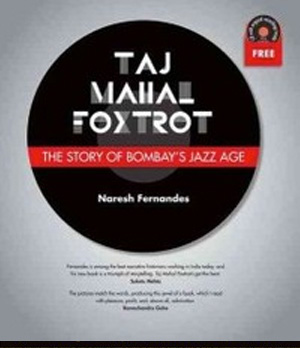
Taj Mahal Foxtrot: The Story of Bombay’s Jazz Age
Naresh Fernandes (2012)
The Colonial City and the Challenge of Modernity: Urban Hegemonies and Civic Contestations in Bombay (1900-1925)
Sandip Hazareesingh (2007)

House, But No Garden: Apartment Living in Bombay’s Suburbs, 1898-1964
Nikhil Rao (2013)
The Making of an Indian Metropolis: Colonial Governance and Public Culture in Bombay, 1890-1920
Prashant Kidambi (2007)
Bombay Place-names and Street-names: An Excursion into the By-ways of the History of Bombay City, 1917
Samuel Townsend Sheppard (2010)
There’s a kind of vulgar redevelopment that’s taken over the city, where the intention is to build something, but there’s really no thought given to it, so now you are left with skywalks that people don’t use.
Yeah, the people living in Grant Road next door to it can’t open their windows now. So many flyovers and skywalks in Bombay have this problem. There are large Art Deco building complexes at Nana Chowk—Ness Baug, Ishwardas Mansion—that whole dynamic has been destroyed because of the skywalk.
Ness Baug, especially, with that semi-circular sweep. The physical presence of that building was defined by the motion and sweep that went from Grant Road Bridge all the way to the other end. With the skywalk now there’s this ugly zero imposed right over Nana Chowk.
There’s a building facing it with sweet bird motifs on the Gamdevi side, all that’s been lost because of the skywalk. With Tardeo and Nana Chowk, it’s suddenly become this hub of skyscrapers and skywalks. You have the Imperial Towers and Shreepati Arcade, some of the tallest buildings in India. I don’t know why it’s got this dubious distinction now of being rapidly developed.
Is it because of the heritage laws that don’t protect buildings constructed after 1940?
Dhun Lodge was more than a hundred years old, and it was still de-listed and destroyed.
I think that’s become a nationwide problem now, with all the discussion developing around the Hall of Nations in Delhi. It’s not a fight that Bombay is fighting alone. I’d like to begin wrapping up this interview by asking you about the buildings that you keep returning to in Bombay.
I like the Ripon Club building; it’s called the N.M. Wadia building now. That’s a wonderful building, from the lift to the marble staircase, to the tiling and the doors, the Bombay fornicator chairs, Felix the waiter, all very old-school. I think that’s probably my favourite building in terms of a lived space, where I return frequently. I like going to the Prince of Wales Museum, I like the Kala Ghoda district. I went to the Bombay Gymkhana very recently, I hadn’t been there much, and I thought it was the best preserved of clubs. So if I were to become the member of any club other than the Ripon Club, I think it would be the Bombay Gymkhana.
Speaking of Felix the waiter, you’ve highlighted many other communities and particularly how Parsis had a symbiotic relationship with the Goan community.
I’m just discovering it, actually, because growing up I had only heard about them from my grandmother. It was a relationship with their staff; it was a relationship between friends. All the Parsis mention the loss of Goan servants, and the Irani guys are saying, ‘All the Catholics have left Dhobi Talao; they have left Byculla, so all our crowd has changed.’ I think it’s more about the Goans and their mobility; going off to the ships, and not wanting to work in these positions. I think the Parsis would still stick with them if they could. Dukkar Galli in Dhobi Talao is such a great little slice of Goan-Parsi-Irani life, with that Paris bakery and the pork guys and Sonapur church. That galli is probably amongst the last great little cosmopolitan gallis, you can still see it all there.
There’s this wonderful quote on your blog by James Douglas: ‘Bombay is not a good place for ghosts. There is too much activity, too many people, and too great an amount of gas and electric light.’ That is true to a great extent, isn’t it? We don’t live with the melancholy nostalgia of things. In the future, how do you think things will shape up for our generation?
A little bit on that quote. That was the opening quote for Nile Green’s book called Bombay Islam, an academic book on different kinds of Muslims in Bombay. There was no ‘Bombay Muslim’, there were so many diverse communities of Muslims. I had first read it there. Bombay will always be a city of lots of activity, but the ghosts of the past will always be here. It will be so difficult to go down so many streets and not think of that. So many of the Irani café guys that I meet have a close connect with the past, not that they talk to the deceased, but it is more of a spiritual link. The burden, I think, will be much greater for people like us. We have to live with the knowledge that Bombay could have been such a great city. We have to live with all the ghosts of so many buildings; not of people, but all that we’ve lost, one block at a time.




